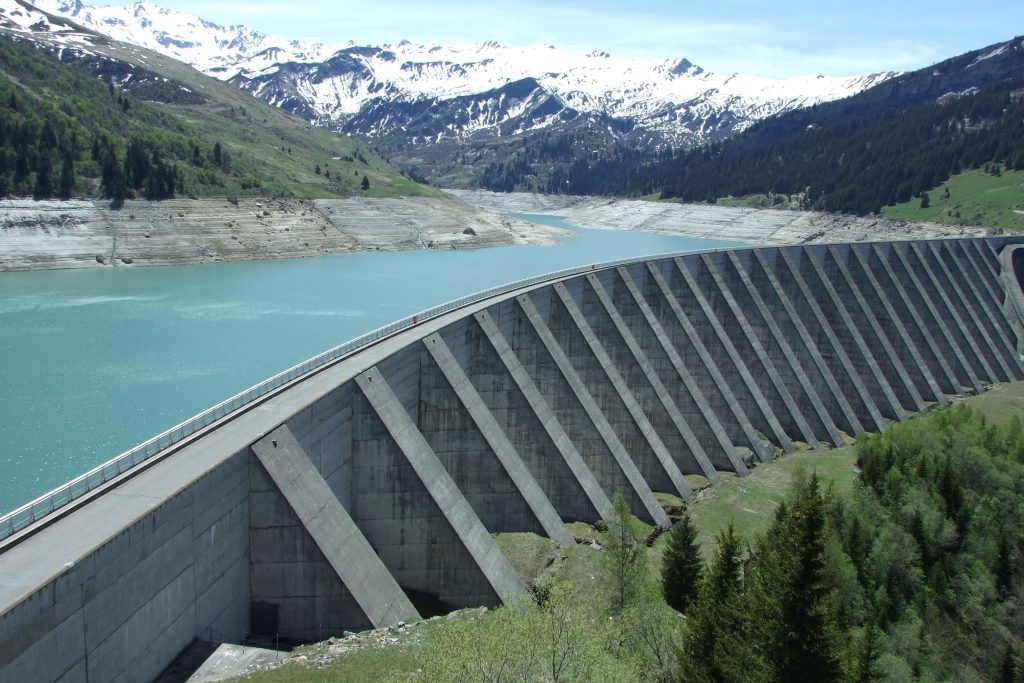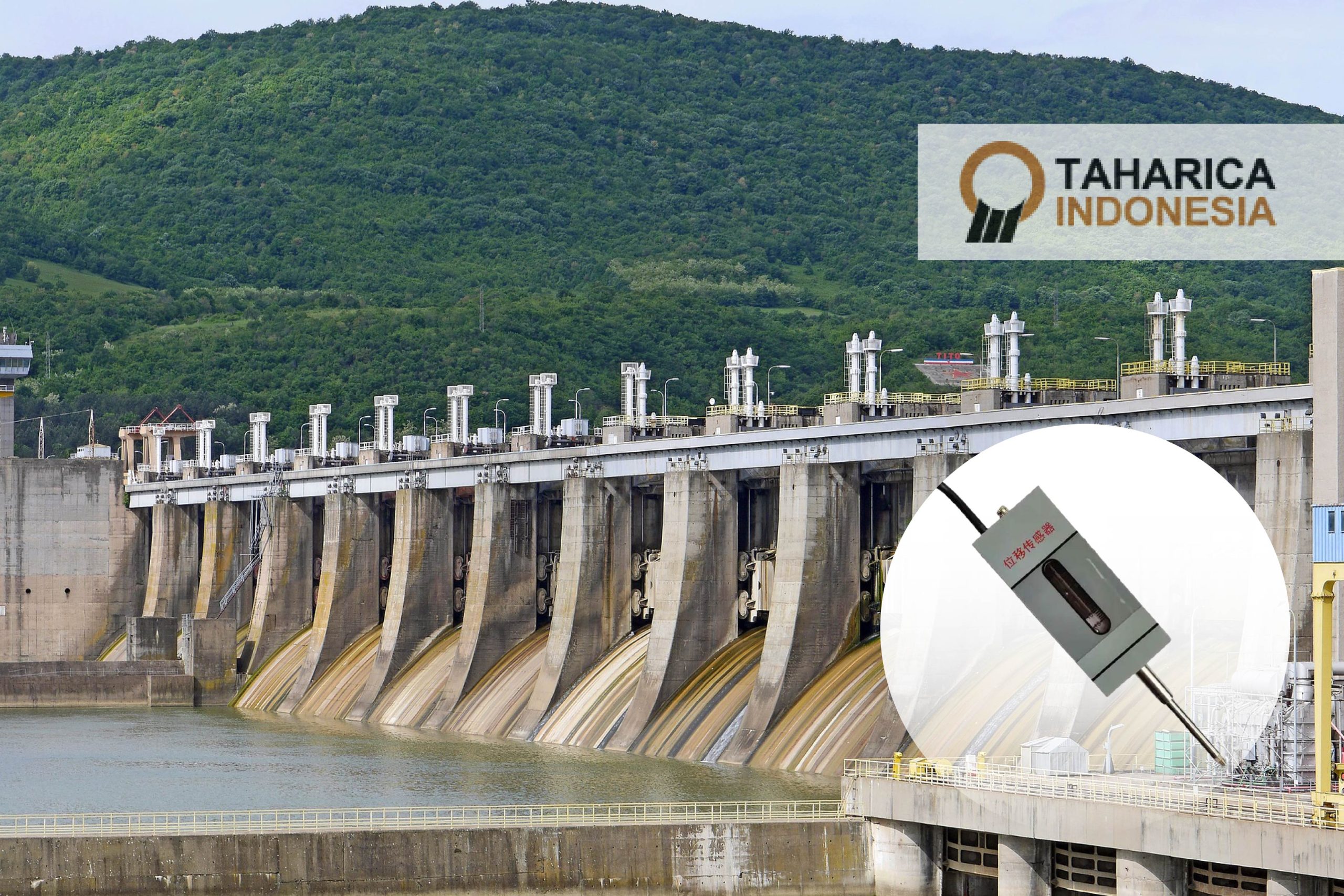The use of deformation/shift sensors has been proven to be one of the latest technologies capable of optimizing the dam monitoring system. An effective monitoring system is urgently needed to ensure the reliability of dams, which are important infrastructure in the regulation and management of water resources. Dam safety and performance play a very crucial role in maintaining a stable water supply and protecting the surrounding area from flooding.
What is a Deformation Sensor on a Dam?
Sophisticated tools used to detect small changes in the dam structure are deformation sensors. This sensor is able to measure the displacement, pressure, and forces that occur on the structural elements of the dam with a high degree of accuracy. By using the information provided by the deformation sensors, engineers and dam managers can monitor the condition of the structure in real-time and take necessary action before failure or more serious damage occurs.
Shift sensor technology is currently experiencing significant development. The sensors used have high sensitivity, a wide measurement range, and the ability to transmit data in real-time. This allows the dam manager to monitor structural deformation with high precision, even in structural elements that are highly sensitive to change, such as retaining walls and dam foundations.

What Technologies are Used in Deformation Sensors?
Deformation sensors use a variety of technologies to detect small changes in structure. Some of the technologies commonly used in deformation sensors include:
- Strain Gauge Technology: Strain gauges are sensors that use changes in electrical resistance to measure deformation. When pressure or force is applied to a structural element, the strain gauge will experience a change in resistance which can be measured and used as an indicator of deformation changes.
- Laser Technology: Laser-based deformation sensors use a laser beam to measure displacement and deformation. A laser beam is emitted onto the surface of the target, and changes in the position or distance of the surface can be measured with high precision using a laser detector.
- Ultrasonic Technology: Ultrasonic deformation sensors use ultrasonic waves to measure changes in position or deformation. Ultrasonic waves are emitted and then reflected back by the target surface. By measuring changes in the travel time of ultrasonic waves, displacement or deformation can be calculated.
- Capacitive Technology: Capacitive deformation sensors use changes in capacitance to measure deformation. This sensor consists of two conductive plates separated by a dielectric material. When there is a shift or deformation in the structure, the capacitance between the plates changes, and the change can be measured.
- Fiber Optic Technology: Fiber optic deformation sensors use optical fibers as deformation measuring elements. Deformation changes in the structure change the nature of light transmission through the optical fiber, which is then measured to obtain deformation information.
These are just a few examples of the technologies used in deformation sensor tools. There are also other technologies that can be used, depending on the specific needs and characteristics of the desired application.
What is the Potential of Deformation Sensors for Dam Monitoring?
Along with technological developments, the potential of deformation sensors in accurate monitoring of dams continues to increase. Continuous innovation and improvement in terms of sensitivity, precision and communication capabilities of deformation sensors opens up opportunities for wider use in dam management.
In addition to monitoring dam structures, the use of deformation sensors can be expanded to include other factors that have the potential to affect dam safety and performance, such as changes in water level, soil pressure and the surrounding environment. By exploiting the potential of this deformation sensor, the dam monitoring system can become more comprehensive, providing more complete and accurate information for better decision making in dam management.
What are the Deformation Sensor Implementation Steps?
The implementation of this sensor in a dam monitoring system requires careful and planned steps. Some steps to note are as follows:
- Identification of needs: The first step is to identify the needs for monitoring the dam by understanding the characteristics of the dam, the potential risks, and the parameters that need to be monitored.
- Sensor selection: Based on identified monitoring needs, select the appropriate deformation sensor. Make sure the sensors meet the technical requirements, have good accuracy and the necessary communication capabilities.
- Sensor installation: Deformation sensors must be carefully and strategically installed along the dam structure. Consider pre-defined environmental conditions, structural characteristics and monitoring needs.
- Monitoring system configuration: The centralized monitoring system must be configured to receive data sent by the deformation sensors. Plus, set alarms and response actions appropriately to ensure prompt notification and appropriate action when needed.
- Training and maintenance: The dam management team needs to be provided with adequate training on the use and interpretation of deformation sensor data. In addition, perform routine maintenance and calibrate the sensor regularly to maintain optimal performance.
By following these steps carefully, the implementation of deformation sensors in a dam monitoring system can be carried out effectively and efficiently.
What are the Benefits of Installing a Deformation Sensors?
The reliability of the dam has a crucial role in maintaining the safety and survival of the people who live around it. Dam failure can cause devastating floods, impact the economy, and threaten human life. Therefore, prevention of dam failure is a top priority in its management.
In this context, the deformation sensor plays an important role. With their ability to detect very small changes to the dam structure, these sensors can also provide early indications that assist in identifying potential problems before serious failures occur. Thus, maintenance and repairs can be carried out proactively, ultimately increasing the reliability and service life of the dam.
_________________________________
Also Read the Indonesian Version of the Article: Pentingnya Sensor Deformasi dalam Sistem Monitoring Bedungan

